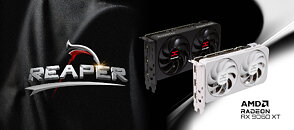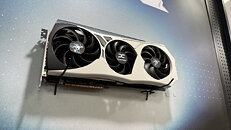GPU IPC Showdown: NVIDIA Blackwell vs Ada Lovelace; AMD RDNA 4 vs RDNA 3
Instructions per clock is a metric used to define and compare CPU architecture performance usually. However, enthusiast colleagues at ComputerBase had an idea to test the IPC improvement in GPUs, comparing it across current and past generations. NVIDIA's Blackwell-based GeForce RTX 50 series faces off against the Ada Lovelace-based RTX 40 generation, while AMD's RDNA 4-powered Radeon RX 9000 lineup challenges the RDNA 3-based RX 7000 series. For NVIDIA, the test used RTX 5070 Ti and 4070 Ti SUPER, aligning ALU counts and clock speeds and treating memory bandwidth differences as negligible. For AMD, the test matched the RX 9060 XT to the RX 7600 XT, both featuring identical ALUs and GDDR6 memory. By closely matching shader counts and normalizing for clock variations, ComputerBase isolates IPC improvements from other hardware enhancements. In rasterized rendering tests across 19 popular titles, NVIDIA's Blackwell architecture delivered an average IPC advantage of just 1% over the older Ada Lovelace.
This difference could easily be attributed to normal benchmark variance. Ray tracing and path tracing benchmarks showed no significant IPC uplift, leaving the latest generation essentially on par with its predecessor when normalized for clock and unit count. AMD's RDNA 4, by contrast, exhibited a substantial IPC leap. Rasterized performance improved by around 20% compared to RDNA 3, while ray-traced workloads enjoyed a roughly 31% gain. Path tracing results were even more extreme, with RDNA 4 delivering nearly twice the FPS, a 100% increase over its predecessor. These findings suggest that NVIDIA's performance improvements primarily stem from higher clock speeds, increased execution unit counts, and enhanced features. AMD's RDNA 4 represents a significant architectural advance, marking its most notable IPC gain since the original RDNA launch.
This difference could easily be attributed to normal benchmark variance. Ray tracing and path tracing benchmarks showed no significant IPC uplift, leaving the latest generation essentially on par with its predecessor when normalized for clock and unit count. AMD's RDNA 4, by contrast, exhibited a substantial IPC leap. Rasterized performance improved by around 20% compared to RDNA 3, while ray-traced workloads enjoyed a roughly 31% gain. Path tracing results were even more extreme, with RDNA 4 delivering nearly twice the FPS, a 100% increase over its predecessor. These findings suggest that NVIDIA's performance improvements primarily stem from higher clock speeds, increased execution unit counts, and enhanced features. AMD's RDNA 4 represents a significant architectural advance, marking its most notable IPC gain since the original RDNA launch.



























































































